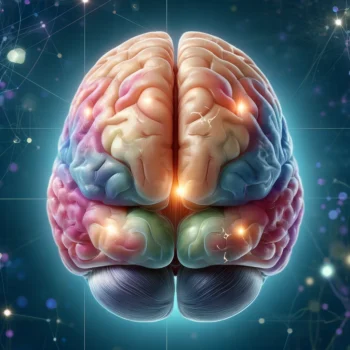Staff Writer for Wake Up World
Have you ever felt an emotional connection to someone else’s pain or suffering, experiencing their feelings as if they were your own? This experience is known as empathy, a vital component of human social interaction. Empathy allows us to understand and respond to others’ emotional experiences, promoting positive social connections and relationships. However, the science behind empathy is complex and multifaceted. This article will explore the neuroscience of empathy, examining the brain mechanisms and processes involved in this crucial human experience.
[pro_ad_display_adzone id=”110028″]
What is Empathy?
Empathy refers to the ability to understand and share the emotional experiences of others. It involves an emotional connection to another person, experiencing their feelings and emotions as if they were our own. Empathy can be broken down into three primary components: cognitive, emotional, and compassionate.
- Cognitive empathy involves understanding the thoughts and feelings of others without necessarily sharing their emotions.
- Emotional empathy involves experiencing the emotions of others as if they were our own.
- Compassionate empathy involves experiencing others’ emotions and taking action to alleviate their suffering.
The Neuroscience of Empathy
Empathy is a complex process that involves multiple brain regions and neural mechanisms. It allows us to understand and share the emotional states of others. Neuroimaging studies have been instrumental in identifying the key brain regions involved in empathy experiences, which include the anterior insula, anterior cingulate cortex, and somatosensory cortex.
Anterior Insula
The anterior insula plays a critical role in processing bodily sensations and emotions. This region is known for its involvement in the subjective experience of feelings, including pain, disgust, and other negative emotions. When individuals witness others in pain or distress, the anterior insula is activated, suggesting that it helps us vicariously experience their suffering [1]. This activation is thought to be a key component of emotional empathy, where we feel another’s emotional state as if it were our own. For instance, a study by Singer et al. (2004) found that the anterior insula is activated both when individuals experience pain themselves and when they observe a loved one in pain, highlighting its role in shared emotional experiences [2].
Anterior Cingulate Cortex
The anterior cingulate cortex (ACC) is involved in emotional regulation, decision-making, and conflict resolution. It plays a pivotal role in the cognitive aspect of empathy, helping us understand and predict the emotions of others. The ACC is activated when individuals engage in tasks that require understanding others’ emotions, such as recognizing facial expressions or imagining another person’s perspective [3]. This region’s involvement in empathy is crucial for navigating social interactions and responding appropriately to others’ emotional states. Research has shown that damage to the ACC can impair one’s ability to empathize, underscoring its importance in maintaining effective social functioning [4].
Somatosensory Cortex
The somatosensory cortex processes sensory information from the body, including touch, temperature, and pain. This region’s activation during empathy experiences suggests that it contributes to the physical sensation of empathy, such as feeling someone else’s pain. When we see someone else in pain, the somatosensory cortex can become active, mirroring the neural activity that would occur if we were experiencing the pain ourselves [5]. This mirroring process is thought to be facilitated by mirror neurons, which fire when we perform an action and when we observe someone else performing the same [6]. The involvement of the somatosensory cortex highlights the embodied nature of empathy, where understanding another’s physical state involves simulating it within our own neural framework.
Additional Brain Regions Involved in Empathy
Mirror Neuron System
The mirror neuron system, primarily located in the premotor cortex and inferior parietal lobule, is essential for understanding others’ actions and intentions. These neurons fire both when an individual performs an action and when they observe someone else performing the same action, facilitating a direct form of empathy. This system helps us grasp others’ emotions and intentions by internally replicating their experiences [7].
Amygdala
The amygdala is crucial for processing emotional information related to fear and threat. Its role in empathy involves recognizing and responding to others’ emotional cues, such as fearful facial expressions. Dysfunction in the amygdala, as seen in psychopathy, can lead to reduced emotional empathy and a lack of remorse or guilt [8].
Prefrontal Cortex
The prefrontal cortex, including the orbitofrontal and dorsolateral prefrontal cortices, is involved in higher-order cognitive processes such as decision-making, social behavior, and empathy. It integrates emotional and cognitive information to help us understand and respond to others’ needs. Damage to the prefrontal cortex can impair empathetic responses and social interactions [9].
Integrating Findings: A Network Perspective
Understanding empathy involves considering how these brain regions interact as part of a broader neural network. Functional connectivity studies show that effective empathy requires coordinated activity between these regions. For example, the anterior insula and ACC must communicate effectively to integrate emotional and cognitive aspects of empathy. Disruptions in these networks can lead to empathy deficits, highlighting the importance of neural integration in empathetic processes [10].
The Importance of Empathy
Empathy is crucial in social interaction, promoting positive relationships and connections. More empathetic individuals can better understand and respond to others’ emotional experiences, leading to more positive social outcomes. Empathy also plays a vital role in moral decision-making, promoting prosocial behavior and altruism [11].
The Neuroscience of Empathy Disorders
Empathy disorders, such as autism and psychopathy, are characterized by deficits in the ability to experience empathy. Individuals with autism often have difficulty understanding and responding to others’ emotional experiences. Individuals with psychopathy may lack emotional empathy and have difficulty feeling remorse or guilt [12].
Neuroscience research has identified several brain mechanisms and processes contributing to empathy deficits. Studies have shown that individuals with autism have reduced activity in the mirror neuron system, a brain mechanism involved in imitating and understanding the actions of others [13]. Individuals with psychopathy have reduced activity in the amygdala, a brain region involved in processing emotional information [14].
Enhancing Empathy
Research indicates that empathy can be cultivated through various interventions. Practices such as mindfulness meditation, empathy training programs, and cognitive-behavioral therapies have shown promise in enhancing empathetic abilities [15].
Conclusion
Empathy is a crucial human experience that promotes positive social connections and relationships. The neuroscience of empathy is complex and multifaceted, involving several brain regions and mechanisms. Understanding the science of empathy can help us better understand and respond to others’ emotional experiences, promoting positive social outcomes and moral decision-making. As research advances, we may discover new ways to enhance empathy in individuals and address empathy-related disorders, ultimately promoting a more compassionate and connected society.
Article References
- Decety, J., & Jackson, P. L. (2004). The functional architecture of human empathy. https://www.ncbi.nlm.nih.gov/pubmed/15537986
- Singer, T., Seymour, B., O’Doherty, J., Kaube, H., Dolan, R. J., & Frith, C. D. (2004). Empathy for pain involves the affective but not sensory components of pain. https://science.sciencemag.org/content/303/5661/1157
- Shamay-Tsoory, S. G., & Aharon-Peretz, J. (2007). Dissociable prefrontal networks for cognitive and affective theory of mind: a lesion study. https://pubmed.ncbi.nlm.nih.gov/17640690/
- Decety, J., & Jackson, P. L. (2004). The functional architecture of human empathy. https://www.ncbi.nlm.nih.gov/pubmed/15537986
- Singer, T., Seymour, B., O’Doherty, J., Kaube, H., Dolan, R. J., & Frith, C. D. (2004). Empathy for pain involves the affective but not sensory components of pain. https://science.sciencemag.org/content/303/5661/1157
- Rizzolatti, G., & Craighero, L. (2004). The mirror-neuron system. https://www.annualreviews.org/doi/abs/10.1146
- Rizzolatti, G., & Craighero, L. (2004). The mirror-neuron system. https://www.annualreviews.org/doi/abs/10.1146
- Marsh, A. A., Finger, E. C., Mitchell, D. G., Reid, M. E., Sims, C. & Blair, R. J. (2008). Reduced amygdala response to fearful expressions in children and adolescents with callous-unemotional traits and disruptive behavior disorders. https://ajp.psychiatryonline.org/doi/full/10.1176
- Blair, R. J. (2005). Responding to the emotions of others: dissociating forms of empathy through the study of typical and psychiatric populations. https://pubmed.ncbi.nlm.nih.gov/16157488
- Frith, U., & Frith, C. D. (2008). Social cognition in humans. https://pubmed.ncbi.nlm.nih.gov/17714666
- Hein, G., Silani, G., Preuschoff, K., Batson, C. D., & Singer, T. (2010). Neural responses to ingroup and outgroup members’ suffering predict individual differences in costly helping. https://pubmed.ncbi.nlm.nih.gov/20920798
- Marsh, A. A., Finger, E. C., Mitchell, D. G., Reid, M. E., Sims, C., Kosson, D. S., … & Blair, R. J. (2008). Reduced amygdala response to fearful expressions in children and adolescents with callous-unemotional traits and disruptive behavior disorders. https://ajp.psychiatryonline.org/doi/full/10.1176
- Rizzolatti, G., & Craighero, L. (2004). The mirror-neuron system. https://www.annualreviews.org/doi/abs/10.1146
- Blair, R. J. (2005). Responding to the emotions of others: dissociating forms of empathy through the study of typical and psychiatric populations. Consciousness and cognition. https://pubmed.ncbi.nlm.nih.gov/16157488
- Hein, G., Silani, G., Preuschoff, K., Batson, C. D., & Singer, T. (2010). Neural responses to ingroup and outgroup members’ suffering predict individual differences in costly helping. https://pubmed.ncbi.nlm.nih.gov/20920798
About the Author
Lily Anderson is an enthusiastic writer and curious investigator of the latest scientific developments. Driven by a strong desire to learn, she has a knack for simplifying complex concepts into engaging stories, making science accessible and interesting to a broad audience. Lily’s work is important for connecting specialists with the general public, sparking wonder, and fostering meaningful conversations about new scientific discoveries.
[pro_ad_display_adzone id=”110027″]







